Welcome to First Nations News & Views. This weekly series is one element in the “Invisible Indians” project put together by Meteor Blades and me, with assistance from the Native American Netroots Group. Each Sunday’s edition is published at 3:30 p.m. Pacific Time, includes a short, original feature article, a look at some date relevant to American Indian history, and some briefs chosen to show the diversity of modern Indians living both on and off reservations in the United States and Canada.
| Cross Posted at Daily Kos |
| Potter Valley Pomo Mural Project |
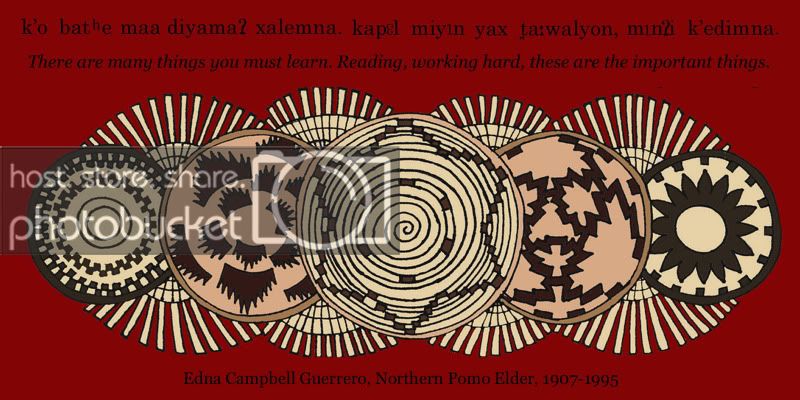 |
| There are many things you must learn. Reading, working hard, these are the important things.
Edna Campbell Guerrero, Northern Pomo Elder, 1907-1995 Design: Carrie Mayfield |
Guided by their art teacher and the input of local Indians, students at Potter Valley Schools, K-12 in Northern California have created a stunning mural that portrays the culture of the Pomo Potter Valley Tribe. The tribe is descended from the first-known inhabitants of the valley, which the Pomo called Ba-lo Kai. Europeans first settled there, at the headwaters of the East Fork of the Russian River, in 1852.
Carrie Mayfield, the art teacher, and Sam Phillips (Round Valley Indians-Concow/Wailaciki), the utility maintenance man at the school, collaborated on a means to recognize the Pomos and came up with the mural concept. The idea was to accurately reflect the tribe’s culture and also educate Potter Valley students.
Phillips, who leads the school’s multicultural club, organized a project team of staff members, Indian and non-Indian students and their families to give input and vote on all aspects making up the final design. The team decided that the tribe’s various woven basket styles would offer the best representation of Pomo culture.
Mayfield began researching basket designs indigenous to the area. Phillips has a close relationship with the Pomos, and he introduced her to Salvador Rosales, the tribal chairman. Mayfield learned the tribe’s history and viewed old photos and artifacts belonging to the tribe.
In an email to News & Views, she wrote:
The history of European settlers in Potter Valley mirrors that of other Northern California communities. Before they arrived, there was a strong and thriving Native community in the valley. The oak trees provided the people with acorns, a staple in their diet used to make various food including mash and the river provided the people with fish. The valley was a richly productive area which supported the Pomo people for many generations. […]
The arrival of the Europeans and their views of the local Indian population caused many local Pomo people to leave Potter Valley to seek work in other parts of Mendocino County in order to survive. The Pomo people who remained were forced onto reservations and “educated” at the first Potter Valley School, a quarter mile away from the present school site where I now teach.
Like many other California Indians, the Pomo are known for their petroglyphs. But, since the 1960s, the current land-owners, descendants of those first European settlers, have not permitted the tribe to document or photograph the rock carvings, preventing it from recording its own history.
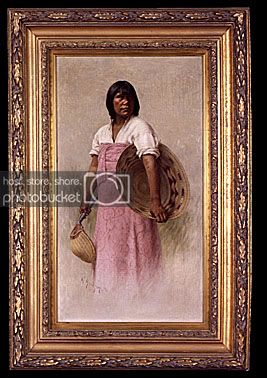 Mayfield’s research led her to the Grace Hudson Museum in Ukiah, 18 miles down the road. Hudson, one of the first European settlers, collected the baskets of the Northern Pomo. During her lifetime, the nationally known Hudson painted 684 portraits of Pomos.
Mayfield’s research led her to the Grace Hudson Museum in Ukiah, 18 miles down the road. Hudson, one of the first European settlers, collected the baskets of the Northern Pomo. During her lifetime, the nationally known Hudson painted 684 portraits of Pomos.
Once the mural’s purpose was explained, the museum was extremely cooperative and removed the baskets from their cases, allowing Mayfield to photograph them. The intricate basket designs took a long time to sketch. From her photos of the baskets, she reproduced accurate colors of the weavers’ craftsmanship.
The local school board granted the prominent location Mayfield originally wanted. Phillips raised money through the multicultural club to buy materials. Finally, with preparatory work completed, student volunteers set to work painting the mural.
An Indian 5th-grader suggested Weaving a Stronger Future as the original mural text. “But,” Mayfield said, “Sam had discovered in talking with the elders that this simple, yet powerful statement could not be translated into Pomo since there is no direct translation for the word or even the concept of future in Pomo language.” Phillips then found the Northern Pomo elder’s quotation by Edna Campbell Guerrero and the mural committee approved it. The mural incorporates Mayfield’s idea of including Pomo translated into English. A hundred invitations featuring the mural design were sent to local schools, multicultural clubs and to Pomo tribespeople. The two-year project was unveiled on Nov. 18, 2011.
Mayfield currently is at work helping to put together a presentation for elementary classes so pupils can gain an early understanding of the mural’s significance and that of the original inhabitants of the land they occupy.
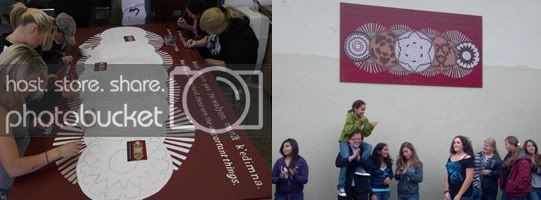 |
| Photographer: Carrie Mayfield |
Mayfield’s purpose is strong:
To me, this mural was just the first step in a long process this community must make to begin to right the wrongs of the past. The earliest inhabitants of this valley must be recognized and honored so that their descendants, including my students, may feel pride in their heritage, their culture, and themselves. The Potter Valley tribe is currently working to buy back the lands taken from them and regain sacred sites, weaving a stronger future for tribal youth in Potter Valley.
-News & Views h/t to elfling
 |
 |
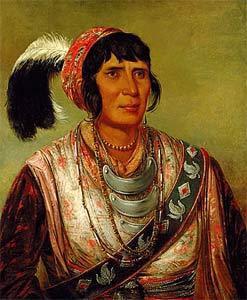
This Week in American Indian History in 1838
They called him a “renegade.” That was the label attached to Indians who refused to go where and do what they were told as well as give up the land they lived on. Osceola was his name, “Black Drink,” and he and his small band of Seminoles, had by late 1837 been engaged in highly effective guerrilla warfare for two years in what became known as the Second Seminole War, the most expensive unresolved U.S. conflict with Indians in history. Like many Seminoles, then and today, he was a mix of Creek, Scottish, English and African American blood, and he sometimes went by the name Billy Powell, after the Englishman presumed to be his father, William Powell. In October 1837, after many victorious battles, Osceola agreed to meet for negotiations under a flag of truce at Fort Payton, Fla. It was a trick. He was disarmed and arrested, held at Fort Marion in St. Augustine and later moved to Fort Moultrie, in Charleston, S.C.
The deception generated a national outcry, and many people came to visit him, including the famous artist George Catlin, who persuaded him to pose for a painting. So many painters wanted to capture Osceola’s likeness, in fact, that he sat for more than one at a time. But Catlin was his favorite and they often talked late into the night. A little more than a month after his arrival in South Carolina, on Jan. 30, 1838, he was found dead in his prison cell, the official verdict being malaria, although others say he died of a broken heart. He was buried with full military honors. But his head was later removed and embalmed, its whereabouts being today unknown. Osceola’s death produced an outpouring of engravings and paintings, many of them bogus. Catlin’s was by far the best, catching the warrior with a finely detailed elegant gracefulness. Among the lesser works were widely circulated portraits showing Osceola dressed in Plains Indian-style buckskins with tipis in the background, a form of shelter Southeastern Indians would not recognize. You can see a small collection of these portraits and descriptions of them at this excellent web site. – Meteor Blades
 |
New & Views Briefs by Meteor Blades
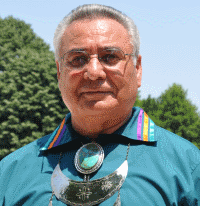
NCAI President Asks Feds for More Flexibility
Two days after President Obama’s State of the Union address, Jefferson Keel (Chickasaw) gave a speech in Washington, D.C., on the State of Indian Nations. Keel, lieutenant governor of the Chickasaw Nation, is president of the National Congress of American Indians. Obama, he said, should give Indians greater attention.
“He’s kept his word,” Keel said. “He has placed people in strategic and important places in his administration and they’re doing a tremendous job, but it’s limited. Again, access is limited and we need to expand that and we need broader support.” Many of the areas where broader support is needed are familiar – better health services, and enhanced sovereignty on Indian lands. Other are less known outside the American Indian community. Keel urged reauthorization of the Violence Against Women Act re-authorization and passage of the Save Native Women Act, “both of which would take critical steps to address the horrific rates of violence being perpetrated against” Indian women.
Another concern is education and the digital divide. Keel pointed out that only one out of every 10 people living on tribal land have access to broadband Internet service. He urged passage of a bill introduced last year. “The Native CLASS Act [Culture, Language, and Access for Success in Schools] offers the chance to provide the education our young people need to succeed today and build economies that Indian country needs for tomorrow. Our young people must not be left behind anymore.”
Keel focused considerable time on resource development on tribal lands. “Tribal governments have proven their capacities to grow our economies, educate our people and manage our resources. We need our federal government to put the decisions back in the hands of people who live in Indian country, the people who know best because these are our homelands, these are our people.
 |
Obama Calls His Administration ‘Turning Point’ for Indians
At an election fund-raiser with the Native American Leadership Council in Washington, D.C., Friday, President Barack Obama said times have changed in the federal government’s relationship with American Indians.
I believe that one day we’re going to be able to look back on these years and say this was a turning point in nation-to-nation relations; that this was turning point when the nations all across the country recognized that they were full partners, treated with dignity and respect and consultation; that this wasn’t just a side note on a White House agenda, but this was part and parcel of our broader agenda to make sure that everybody has opportunity. […] As long as Native Americans face unemployment rates that are far higher than the national average, we’ve got more work to do. We want new businesses and new opportunities to take root on the reservation. We want to stop repeating the mistakes of the past.
About 70 people paid at least $15,000 for tickets to the event, with the money benefiting the Obama Victory Fund.
 |
Rosebud Reservation Students Challenge ABC Report with Video
Like many other Americans, students at the Todd County High School on the Rosebud Reservation of South Dakota had a visceral reaction to ABC’s “A Hidden America: Children of the Plains,” which aired in October 2011. But theirs was different than the reaction of others. The program, a report about children on the Pine Ridge Reservation by Diane Sawyer, focused a lot of attention on familiar problems: poverty, violence, alcoholism and obesity. The people at Pine Ridge and Rosebud are members of tribes most Americans call the Sioux.
About 50 of the high school students felt they were stereotyped. Led by Feather Colombe, they produced a reply video called “More Than That.” It’s now been viewed more than 40,000 times on YouTube.
In the view of kaneratiio:
The ABC “special” was more about Diane Sawyer trying to promote herself than telling a truth about Native life. Her “special” was opportunistic, condescending and misleading. The fact of the matter is that the problems on Native lands are not because time forgot us. It is the direct result of state and federal government policies and the clear complicity of the American people. It is this generation that will swing the pendulum back the other way with no help from Diane Sawyer on horseback.
Here’s the video:
http://www.youtube.com/embed/F…
News & Views h/t to Bill in MD
 |
Bermuda Indians Spread the Word About Their Ancestry
Beginning in 1637, and for more than a century, thousands of American Indians were sold into slavery in Caribbean. Today in Bermuda, descendants of these captives and survivors of battles and massacres prosecuted by New England Puritans and other European settlers seek to reconnect with their roots. Their ancestors include the Pequot and Wampanoag, the latter being the tribe whose assistance rescued those Pilgrims who survived the winter of 1620.
One of the groups seeking to teach islanders and others about their past is the St. David’s Islanders and Native Community. Members have attended Indian pow-wows in the United States and held several bi-annual pow-wows of their own in Bermuda. “Our mission is to teach people about our Native American ancestry,” says group secretary Patricia Raynor. “We often speak at schools about it. We give a talk and show them one dance.”
To raise money to further its aims, a trustee of the group, chef and graphic artist Kevin Watson, designed a blanket. Its colors, blue and white, represent the tribes of the northeast and of St. David’s, according to Watson. In the center is the group’s logo, two hands clasping one another, which “represents our reconnection with our relatives in New England after 300 plus years.” The blanket also depicts Bermuda cedar, palmetto, and a longtail bird. In addition there are rockfish, turtles and a marine mollusc called suck-rocks, all of them once used by St. David’s Islanders for food.
| From left Kevin Watson, Patricia Raynor and Ronnie Chameau with the newly designed blanket to raise funds
for the St David’s Islanders and Native Community organization. (Photo by Glenn Tucker ) |
 |
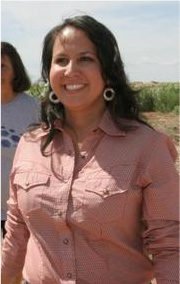
Two Indian Congressional Candidates Praise Giffords
Upon learning that Democratic Rep. Gabrielle Giffords is resigning from her 8th District Arizona congressional seat, two American Indian candidates who are seeking the Democratic nomination for Congressional seats in their states strongly praised her. Giffords, who was nearly killed in a shooting a year ago and has resigned to finish her recovery, is widely viewed as a friend of Indians.
Wenona Benally Baldenegro (Navajo) is seeking the Democratic Party’s nomination for Arizona’s 1st District in the July 19 primary. You can read more about her in this Daily Kos diary. She stated:
I thank Congresswoman Giffords for her extraordinary dedication and commitment to serving the great state of Arizona and our nation. Giffords’ courage and strength, in the face of such adversity, has been an inspiration to all of us. Her profound passion for public service has inspired me to answer her call to join together to work for Arizona and this great country.
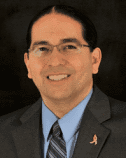
Tribal Chairman Derek Bailey (Grand Traverse Band of Ottawa and Chippewa Indians), who hopes to obtain his party’s nomination for Michigan’s 1st District in the Aug. 7 primary, stated:
Congress is losing a hero with Representative Gabrielle Giffords taking some time off. Gabby is not just a hero because she has so bravely and successfully fought back from that horrific day a year ago. But she is a hero because she refused to play the partisan, political games in Congress that are so harming our country. Gabby preached bipartisanship, and set an example in working to get things done no matter whose idea it was. We are eternally grateful to her for her service. Gabby and her husband Mark have been and remain in our prayers.
 |
Washington State Ponders Naming Holiday to Honor Indians
On January 22, 1855, leaders of the Duwamish, Suquamish and other Indians in Puget Sound surrendered their land at gunpoint to the murderous first governor of Washington Territory, Isaac Stevens. Now, the Washington legislature is discussing honoring Indians by making the day after a state holiday, “Native American Heritage Day.” In case that name sounds familiar, it should. The United States first officially commemorated as “Native American Heritage Day” in 2008 and President Obama called on Americans to celebrate the day after Thanksgiving as “Native American Heritage Day.” The proposed legislation states:
“America’s journey has been marked by both bright times of progress and dark moments of injustice for Native Americans …The Native American population was disrupted and nearly destroyed through European colonization. Genocide, slavery, and political and cultural repression were consequential adversities Native Americans had to overcome. In the face of such hardships, Native Americans endured; their cultural beliefs flourished; and today we celebrate their importance to the United States and the state of Washington.”
Because the day after Thanksgiving is already one of 10 paid legal holidays in Washington, the name-change would go unnoticed by most citizens. In the view of Linda Thomas, a Seattle radio host who chose to embrace an insult she was given early in her career by calling herself the “News Chick,” the legislative move is insulting to Indians. She told her audience: “The state is trying to send a message that a day honoring tribes is unique because it’s a legal holiday. If they really wanted to make it special, why not give Native Americans their own holiday instead of plopping the day on a calendar day that was already a holiday for most?”
 |
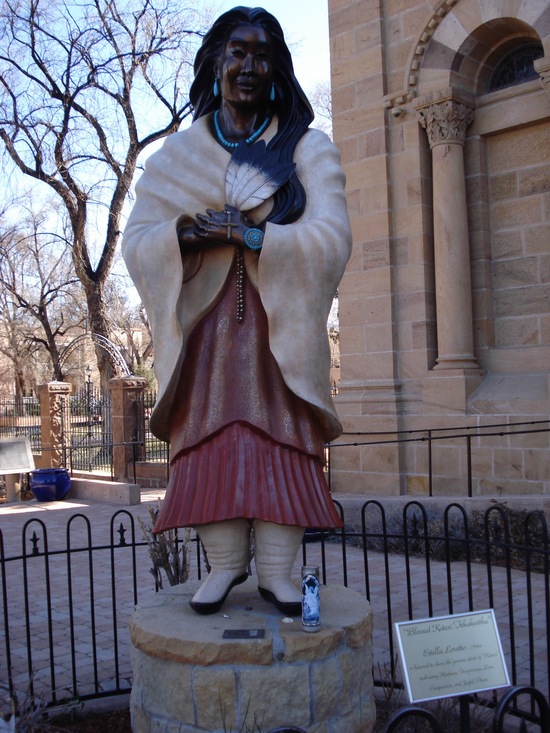
in Santa Fe, N.M., by Estelle Loretto
Lone Mohawk Challenges Sainthood of One of His Tribe
Kateri Tekakwitha will soon become the first American Indian saint. The 17th Century Mohawk woman will be canonized by the Vatican later this year, and most Mohawks and many other Indians, think that’s wonderful, though they believe she should have been made a saint decades ago. But there is dissent.
For sainthood, the Vatican needed a “certified miracle” and none of those that had been brought forward met the requirements. In 2006, one did. An 11-year-old Indian boy afflicated with a lethal flesh-eating bacteria fully recovered. His parents said they had been praying to Kateri.
Her story, as told by the Church, is a grim one. Nearly killed and blinded by smallpox at age 4 and nearly killed later in a raid on her village by French settlers, she survived but was ostracized by her tribe and fled at age 20 to Kahnawake, a village of Catholic converts where she was baptized and nursed the ill and dying until she herself died at age 24. It is claimed her smallpox-scarred face suddenly cleared at her death. As a consequence of this belief, today there is a shrine to her in a 230-year-old barn in Fonda, N.Y., at one time the Mohawk village of Caughnawaga, where Kateri spent most of her life.
The sainthood talk doesn’t impress 67-year-old Tom Porter (Mohawk), whose traditional name is Sakokwenionkwas, or “He Who Wins.” He says Kateri “was used.” Porter is not a Catholic and has spent years trying to restore the tribe’s old beliefs. His six children and 11 grandchildren follow these traditions.
“Christianity is not a shoe that will ever fit. Not for my feet, or my heart, or my soul,” he said. […]
To him, there is no difference between the spread of Christianity and the cruel policies, including forced assimilation in grim 20th-century government boarding schools, that were used to subjugate Native Americans. […]
He thinks Kateri was probably forced to become a Catholic. “I don’t know if she really was a Christian or not,” he said. “They were in poverty at that time. The Europeans had destroyed everything, people were destitute and starving, and if you wanted to get help of any kind you had to be a Christian.”
Porter conceded that few Mohawk agree with him. He even admitted that some in his extended family are devoted to Kateri.
“It breaks my heart,” he said. […]
• The Second Poorest County in America
The 1980 U.S. Census proclaimed Shannon County, the heart of the Pine Ridge Reservation, as the single poorest county in America. Thirty years later the 2010 U. S. Census has just announced that Shannon County is the second poorest county in America.
• Shannon County Rezidents Sue for Early Voting
By failing to provide the early voting, the plaintiffs claim violations of the 14th Amendment’s guarantee of equal protection under the law and violation of the Voting Rights Act of 1965.
• American Indian Gangsters Busted in Minnesota
Two dozen suspected members of Native Mob, a Minneapolis-born, American Indian gang, were indicted last week. The gang has been a problem for tribal, federal and local law enforcement for two decades.
• Hopi, Navajo Join to Preserve Petroglyphs
The Hopi call it Tutuveni, meaning “newspaper rock.” It’s a collection of sandstone boulders outside of Tuba City, Ariz., about 80 miles from the Grand Canyon. The site contains some 5,000 petroglyphs of Hopi clan symbols, the largest known collection of such symbols in the American Southwest.
• Census Bureau Sees Sharp Rise in Indian Population
Of the 5.2 million people counted as Indians in the 2010 Census, nearly 2.3 million reported being Indian in combination with one or more of six other race categories. Those who added black, white or both as a personal identifier made up 84 percent of the multi-racial group. The Census does not require respondents to show tribal enrollment or other proof that they have Indian heritage to include them in their count.
Indians have often been referred to as the “Vanishing Americans.” But we are still here, entangled each in his or her unique way with modern America, blended into the dominant culture or not, full-blood or not, on the reservation or not, and living lives much like the lives of other Americans, but with differences related to our history on this continent, our diverse cultures and religions, and our special legal status. To most other Americans, we are invisible, or only perceived in the most stereotyped fashion.
First Nations News & Views is designed to provide a window into our world, each Sunday reporting on a small number of stories, both the good and the not-so-good, and providing a reminder of where we came from, what we are doing now and what matters to us. We wish to make it clear that neither Meteor Blades nor I make any claim whatsoever to speak for anyone other than ourselves, as individuals, not for the Navajo people or the Seminole people, the tribes in which we are enrolled as members, nor, of course, the people of any other tribes.
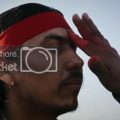
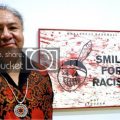
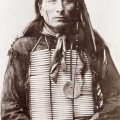
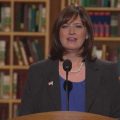
Leave a Reply